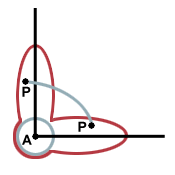Please wait while we process your payment
If you don't see it, please check your spam folder. Sometimes it can end up there.
If you don't see it, please check your spam folder. Sometimes it can end up there.
Please wait while we process your payment

By signing up you agree to our terms and privacy policy.
Don’t have an account? Subscribe now
Create Your Account
Sign up for your FREE 7-day trial
By signing up you agree to our terms and privacy policy.
Already have an account? Log in
Your Email
Choose Your Plan
Individual
Group Discount
Save over 50% with a SparkNotes PLUS Annual Plan!
 payment page
payment page
Purchasing SparkNotes PLUS for a group?
Get Annual Plans at a discount when you buy 2 or more!
Price
$24.99 $18.74 /subscription + tax
Subtotal $37.48 + tax
Save 25% on 2-49 accounts
Save 30% on 50-99 accounts
Want 100 or more? Contact us for a customized plan.
 payment page
payment page
Your Plan
Payment Details
Payment Summary
SparkNotes Plus
You'll be billed after your free trial ends.
7-Day Free Trial
Not Applicable
Renews July 17, 2025 July 10, 2025
Discounts (applied to next billing)
DUE NOW
US $0.00
SNPLUSROCKS20 | 20% Discount
This is not a valid promo code.
Discount Code (one code per order)
SparkNotes PLUS Annual Plan - Group Discount
Qty: 00
SparkNotes Plus subscription is $4.99/month or $24.99/year as selected above. The free trial period is the first 7 days of your subscription. TO CANCEL YOUR SUBSCRIPTION AND AVOID BEING CHARGED, YOU MUST CANCEL BEFORE THE END OF THE FREE TRIAL PERIOD. You may cancel your subscription on your Subscription and Billing page or contact Customer Support at custserv@bn.com. Your subscription will continue automatically once the free trial period is over. Free trial is available to new customers only.
Choose Your Plan
This site is protected by reCAPTCHA and the Google Privacy Policy and Terms of Service apply.
For the next 7 days, you'll have access to awesome PLUS stuff like AP English test prep, No Fear Shakespeare translations and audio, a note-taking tool, personalized dashboard, & much more!
You’ve successfully purchased a group discount. Your group members can use the joining link below to redeem their group membership. You'll also receive an email with the link.
Members will be prompted to log in or create an account to redeem their group membership.
Thanks for creating a SparkNotes account! Continue to start your free trial.
We're sorry, we could not create your account. SparkNotes PLUS is not available in your country. See what countries we’re in.
There was an error creating your account. Please check your payment details and try again.
Please wait while we process your payment

Your PLUS subscription has expired
Please wait while we process your payment
Please wait while we process your payment

Defining Rotation and its Variables
We begin our study of rotational motion by defining exactly what is meant by rotation, and establishing a new set of variables to describe rotational motion. From there we will revisit kinematics to generate equations for the motion of rotating bodies.
We all know generally what it means if an object is rotating. Instead of translating, moving in a straight line, the object moves about an axis in a circle. Frequently, this axis is part of the object that is rotating. Consider a bicycle wheel. When the wheel is spinning, the axis of rotation is simply a line going through the center of the wheel and perpendicular to the plane of the wheel.
In translational motion, we were able to characterize objects as point particles moving in a straight line. With rotational motion, however, we cannot treat objects as particles. If we had treated the bicycle wheel as a particle, with center of mass at its center point, we would observe no rotation: the center of mass would simply be at rest. Thus in rotational motion, much more than in translational motion, we consider objects not as particles, but as rigid bodies. We must take into account not only the position, speed and acceleration of a body, but also its shape. We can thus formalize our definition of rotational motion as such:
A rigid body moves in rotational motion if every point of the body moves in a circular path with a common axis.
This definition clearly applies to a bicycle wheel, due to its circular
symmetry. But what about objects without a circular shape? Can they move in
rotational motion? We shall show that they can by a figure:

Now that we have a clear definition of exactly what rotational motion is, we can define variables that describe rotational motion.
It is possible, and beneficial, to establish variables describing rotational motion that parallel those we derived for translational motion. With a set of similar variables, we can use the same kinematic equations we used with translational motion to explain rotational motion.
Please wait while we process your payment

